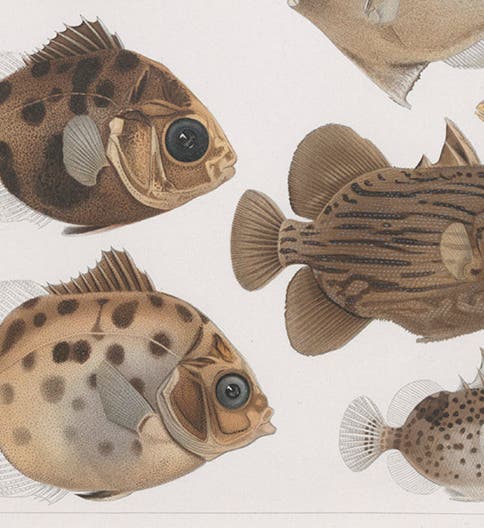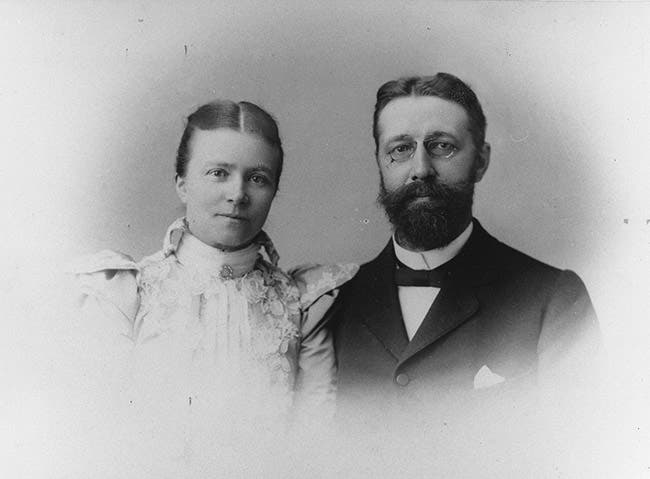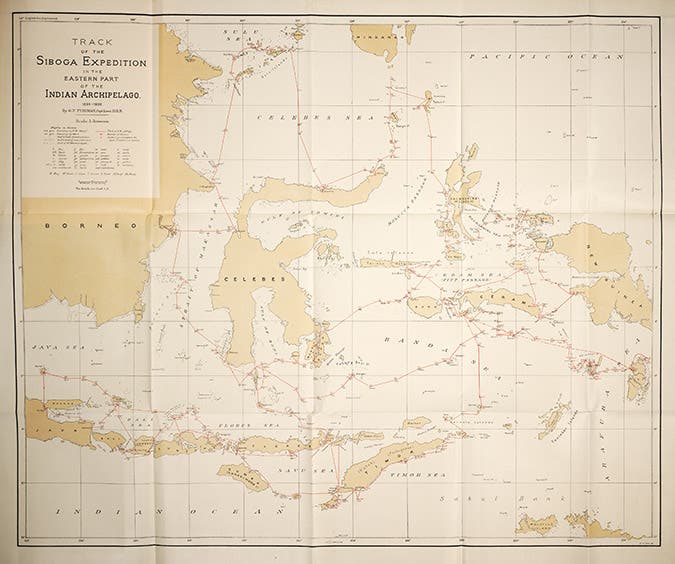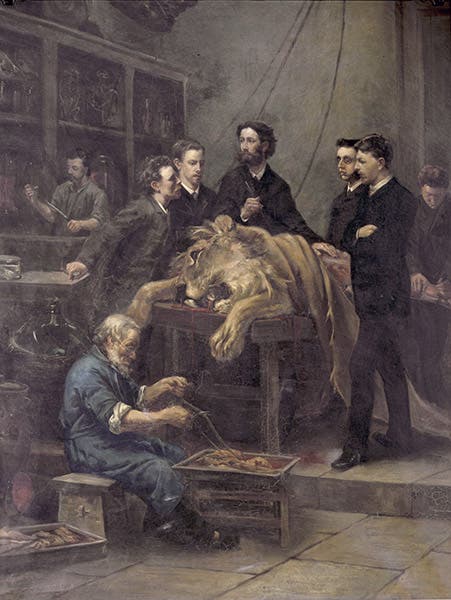Scientist of the Day - Max Weber
Max Wilhelm Carl Weber, a Dutch-German zoologist, was born on December 5, 1852. Not to be confused with the identically named founder of sociology, our Max Weber is best known for his 1904 monograph on mammalian comparative anatomy and systematics, Die Säugetiere. His most important scientific achievement, though lesser known, was his organization and leadership of the 1899-1900 oceanographic expedition to the Dutch East Indies aboard the HM Siboga. Together with his wife, the Dutch algologist Anna Weber-van Bosse, Weber led scientific research of the deep sea basins and the flora and fauna of the deep and shallow seas in present-day Indonesia. They also managed the publication of the Siboga Expedition’s scientific results, which included 148 installments of reports that analyzed the biological, geological and hydrographical data. The majority of the reports were published before Weber’s death in 1937, and thanks to his editorial guidance, constitute a major contribution to the scientific understanding of the diversity of live in the seas of Southeast Asia. The complete collection of reports is held by the Linda Hall Library, which is why I came here on a fellowship.
Weber was born to a Dutch mother and German father in Bonn, Germany. His art dealer father passed away when he was two years old, and his acting guardian decided it would be best to send Weber to boarding school, to avoid the fate of being spoiled by his mother. He completed all his schooling in Germany, developing his love of natural history by amassing a specimen collection in his boarding school room. He graduated with a medical degree and a doctorate, writing his dissertation on the musculature of the eye in lizards. Eduard Von Martens, one of his professors, had travelled and collected extensively in East Asia and inspired Weber’s interest in conducting scientific research abroad.
Weber began his teaching career in Holland in 1879, as lecturer of comparative anatomy at the University of Utrecht. In 1883, he moved to the University of Amsterdam, where he met his wife and had access to the specimens from the Natura Artis Magistra Zoological Gardens. Weber and Weber-van Bosse traveled and collected in Norway, South Africa and the Dutch East Indies prior to their oceanographic expedition aboard the Siboga. Weber’s major area of study was comparative anatomy, and he specialized in fishes and whales, but his teachings and publications included animals from almost all groups of life. He also wrote on physiology, biogeography and ecology. He was appointed the first director of the Zoological Museum of Amsterdam, connected to the Artis Zoo, in 1892. He remained the director until his retirement in 1922.
The Siboga expedition sailed from Surabaya on the island of Java on March 7, 1899 and spent a year dredging, sounding, collecting and exploring the marine environments of the Dutch East Indies. The Siboga was a seminal expedition, due to its official inclusion of a woman scientist and its extensive attention to coral reef life. Weber prepared for the expedition by consulting with many other international scientists involved in oceanographic research, including Alexander Agassiz and those from the British Challenger Expedition (1872-1876) and the German Valdivia Expedition (1898-1899). The extensive focus on a singular region allowed the Siboga Expedition to generate new knowledge in the realm of biogeography (particularly in relation to Wallace’s Line and the divide between Asian and Australian fauna) and added insight to the impressive variety of endemic life forms in the ocean. Nearly half of all the specimens which the Siboga Expedition collected were new to science. Weber himself discovered 131 new fish species.
Weber passed away in 1937, at the age of 84, at his home in Eerbeek, Holland. His contributions to zoology, comparative anatomy and biogeography make him one of the best zoologists of his era.
Max Weber is the central figure in a painting that was commissioned by his wife, Anna Weber-van Bosse, in 1886; he is standing just behind the lion he is dissecting (sixth image). The composition and style were meant to mirror Rembrandt’s 1632 The Anatomy Lesson of Dr. Nicolaes Tulp. The other figures are some of Weber’s more accomplished students.
Emily Hutcheson is a Phd Candidate in the History of Science at the University of Wisconsin-Madison and a former fellow at the Linda Hall Library. Comments and Corrections are welcome; please contact Emily at hutcheson2@wisc.edu










